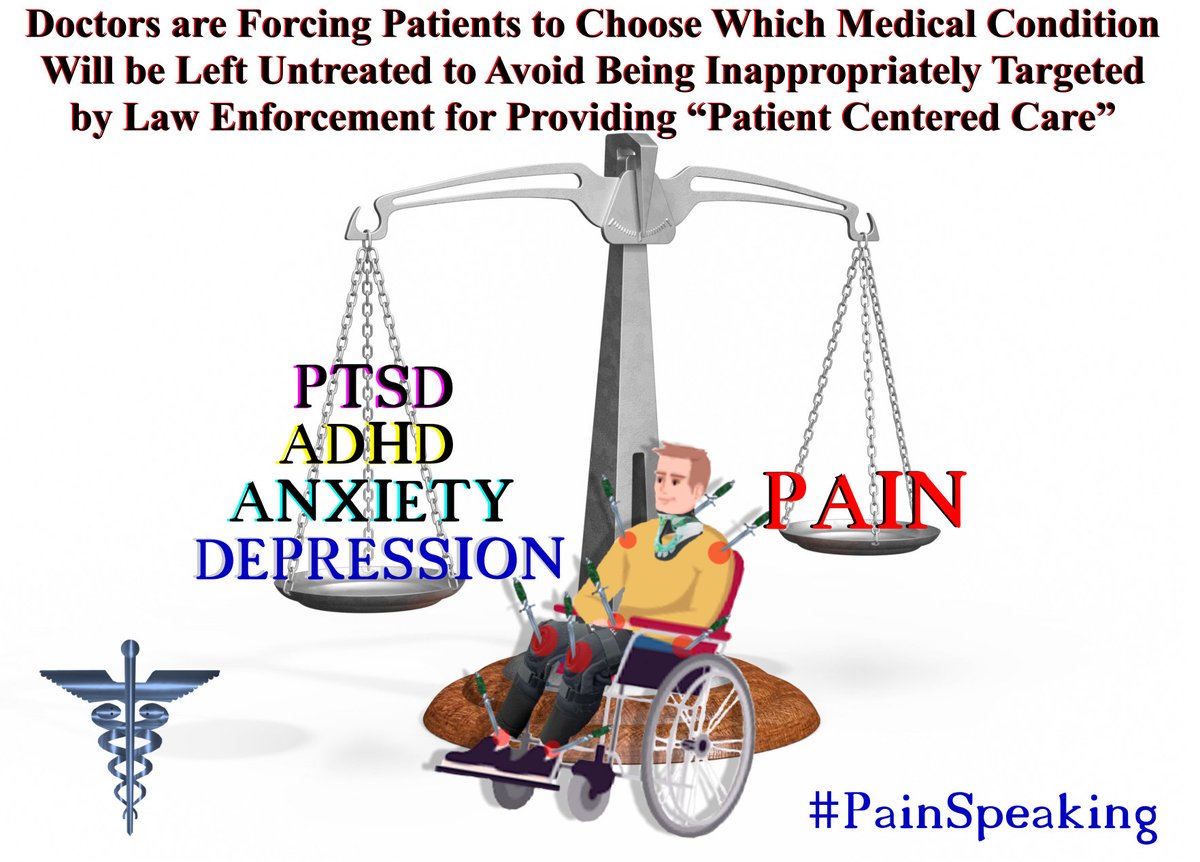
🚩 @CDCInjury promotes #DisablityDiscrimination
Distributing #PROPaganda in violation of Public Law 116-93. Section 718. The Data does NOT support this Narrative
@JoaquinCastrotx @SenTedCruz @JohnCornyn @60Minutes @BBCWorld @HuffPost @VICENews @statnews @TheAtlantic @sarahkliff



Distributing #PROPaganda in violation of Public Law 116-93. Section 718. The Data does NOT support this Narrative
@JoaquinCastrotx @SenTedCruz @JohnCornyn @60Minutes @BBCWorld @HuffPost @VICENews @statnews @TheAtlantic @sarahkliff
https://twitter.com/CDCInjury/status/1524796813156528129




2)"There are a variety of factors that have influenced the progressive pacing of opioid-related overdoses witnessed throughout the second decade of the 21st century. Perhaps the most significant has been the introduction and availability of illicitly
ncbi.nlm.nih.gov/pmc/articles/P…
ncbi.nlm.nih.gov/pmc/articles/P…
3) manufactured synthetic opioid products (namely “fentalogues”),2,3 although additional contributors include increasing rates of polysubstance abuse,2–5 continued poor access to medication assisted treatments and behavioral health supports,6 and restrictions and
4)reductions of legitimate opioid access when clinically indicated.7–11
Despite the multifactorial nature of the current overdose epidemic, there continues to be a disturbing and disproportionate narrative
Despite the multifactorial nature of the current overdose epidemic, there continues to be a disturbing and disproportionate narrative
5)pertaining to the involvement and overall influence of opioid prescribing." @headdock @GhanaboyPharmd @JeffreyFudin @JeffJBettinger
6)"Many current assumptions about opioid analgesics are ill-founded. National discussion has often neglected the potentially devastating effects of uncontrolled chronic pain."
"For more than a decade, millions of Americans were misled into believing
academic.oup.com/painmedicine/a…
"For more than a decade, millions of Americans were misled into believing
academic.oup.com/painmedicine/a…
7) that—as a White House report once characterized it —‘‘opiate overdoses, once almost always due to heroin use, are now increasingly due to abuse of prescription painkillers’’. Little did they know or suspect
8)that the CDC’s coding of prescription painkillers included non- prescribed illicitly manufactured fentanyl and fentanyl analogs and non-prescribed methadone administered or dispensed to patients being treated for opioid use disorder" ~ Mark Edmund Rose, BS, MA
9"..CDC has no way of determining the actual number of prescription opioid overdose deaths each year. For more than a decade, the CDC’s erroneous reports went unchallenged while being used by Congress and the Executive Branch as the basis for public policy
link.springer.com/content/pdf/10…
link.springer.com/content/pdf/10…
10)"Negative attitudes of primary care (PC) and other clinicians toward patients with chronic pain who use illicit substances or misuse RX drugs are widespread...
Reality may be more complex, and patients with chronic pain may use substances to alleviate poorly controlled pain."
Reality may be more complex, and patients with chronic pain may use substances to alleviate poorly controlled pain."

11)Primary Care Patients with Drug Use Report Chronic Pain and Self-Medicate with Alcohol and Other Drugs
➡️ "chronic pain was reported by 87 % (95 % CI: 84–90 %), with 13 % mild, 24 % moderate and 50 % severe
link.springer.com/article/10.100…
➡️ "chronic pain was reported by 87 % (95 % CI: 84–90 %), with 13 % mild, 24 % moderate and 50 % severe
link.springer.com/article/10.100…
12) ➡️Of those who used illicit drugs (i.e., marijuana, cocaine, and/or heroin), 51 % reported using to treat pain
➡️RX drug misuse (not EXACTLY as prescribed), 81 % did so to treat pain.
➡️any heavy drinking in the past 3 months, 38 % did so to treat
➡️RX drug misuse (not EXACTLY as prescribed), 81 % did so to treat pain.
➡️any heavy drinking in the past 3 months, 38 % did so to treat
13)➡️79 % of the high-risk alcohol users did so to treat pain"
14)When the primary reason reported for *Misuse* of prescription pain relievers by over 65% of individuals is for "medical use" for the purpose the prescriptions were developed to treat, that is an indictment of our health care system and drug policy.
samhsa.gov/data/sites/def…
samhsa.gov/data/sites/def…
15)"The prevalence of mental health disorders, the lack of immediate access to affordable treatment of addiction, and inadequately treated or undertreated chronic pain—along with poverty and despair—have caused and sustained the continuing drug crisis."
lynnwebstermd.com/2020/01/18/why…
lynnwebstermd.com/2020/01/18/why…
16)"Many people make another false assumption. They claim that opioid addictions develop because of exposure to the drugs. That is untrue. Genetic and environmental factors determine who will become addicted. Exposure to an opioid or any drug of abuse is necessary
for the expression of the disease—but, by itself, it is insufficient to cause it. @LynnRWebsterMD
• • •
Missing some Tweet in this thread? You can try to
force a refresh







